【unity小技巧】unity最完美的CharacterController 3d角色控制器,实现移动、跳跃、下蹲、奔跑、上下坡、物理碰撞效果,复制粘贴即用_unity中人物控制器
目录
前言
SimpleMove和Move如何选择?
1. SimpleMove
2. Move
配置CharacterController参数
控制相机
移动
跳跃
方式一
方式二
下蹲
处理下坡抖动问题
实现奔跑和不同移速控制
完整代码
补充,简单版本
实现物理碰撞效果(2025/08/06补充)
前言
其实一开始我是不打算写的,我感觉这种简单的功能,网上应该随便一搜一大堆,但是实际去搜会发现网上很多都是复制粘贴,要么没有实操过,要么就是功能不全,或者毫无解释的把代码丢出来,所以特地花时间去研究了研究,下面是记录我的一些思路过程,希望对你有帮助。
为什么使用CharacterController
Unity中常用的三种角色移动方式如下:
-
刚体(Rigidbody)组件 为角色对象添加刚体组件后,可通过施加力(Force)或设置速度(Velocity)实现移动。此方法需要获取输入设备(如键盘、手柄)的输入值,转换为相应的力或速度作用于刚体。刚体自带重力与物理效果,但需额外处理斜坡、楼梯等特殊地形(后续会专门探讨Rigidbody的人物控制技巧)。
-
Transform组件的Translate方法 直接调用Transform组件的Translate方法进行位移。通过输入设备获取移动输入,计算移动方向和距离后执行位移。该方法不受物理引擎控制,缺乏重力与碰撞检测功能,可能导致穿墙等问题,因此实际开发中较少采用。
-
Character Controller组件 为角色添加Character Controller组件后,使用其Move方法实现移动。将输入设备的输入转换为移动向量后传递给Move方法即可。该组件已内置斜坡和楼梯处理方案,解决了刚体的地形适应问题。虽然不适用于复杂物理交互(如推动物体),但可通过直接施加作用力解决(文末将提供具体实现方案)。
SimpleMove和Move如何选择?
而对于CharacterController有用两种移动实现方式,SimpleMove和Move。
1. SimpleMove
- 不受Y轴速度影响,自带重力效果,
无法实现跳跃功能 - 返回值为Bool,当角色接触地面返回True,反之为False。
- SimpleMove方法是CharacterController组件提供的一个用于处理角色平面移动的简化方法,它自动处理了角色与地面的碰撞* 检测和摩擦,但它不支持跳跃等垂直方向的动作
2. Move
- 无重力效果,自行实现重力,
可做跳跃功能 - 返回值(CollisionFlags对象),返回角色与物体碰撞的信息
可以看到SimpleMove看着虽好,但是最大的痛点是无法实现跳跃,所以我们只能忍痛Pass掉
配置CharacterController参数
新增一个胶囊体,代表角色,在角色身上新增CharacterController组件,参数配置如下
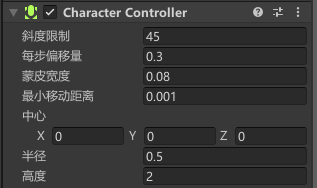
控制相机
将相机拖入为玩家的子物体,放置在角色的头部位置,修改
新增MouseLook脚本,挂载在相机上,控制相机视角
public class MouseLook : MonoBehaviour{ // 鼠标灵敏度 public float mouseSensitivity = 1000f; // 玩家的身体Transform组件,用于旋转 public Transform playerBody; // x轴的旋转角度 float xRotation = 0f; void Start() { // 锁定光标到屏幕中心,并隐藏光标 Cursor.lockState = CursorLockMode.Locked; } // Update在每一帧调用 void Update() { // 执行自由视角查看功能 FreeLook(); } // 自由视角查看功能的实现 void FreeLook() { // 获取鼠标X轴和Y轴的移动量,乘以灵敏度和时间,得到平滑的移动速率 float mouseX = Input.GetAxis(\"Mouse X\") * mouseSensitivity * Time.deltaTime; float mouseY = Input.GetAxis(\"Mouse Y\") * mouseSensitivity * Time.deltaTime; //限制旋转角度在-90到90度之间,防止过度翻转 xRotation = Mathf.Clamp(xRotation, -90f, 90f); // 累计x轴上的旋转量 xRotation -= mouseY; // 应用摄像头的x轴旋转 transform.localRotation = Quaternion.Euler(xRotation, 0f, 0f); // 应用玩家身体的y轴旋转 playerBody.Rotate(Vector3.up * mouseX); }}效果
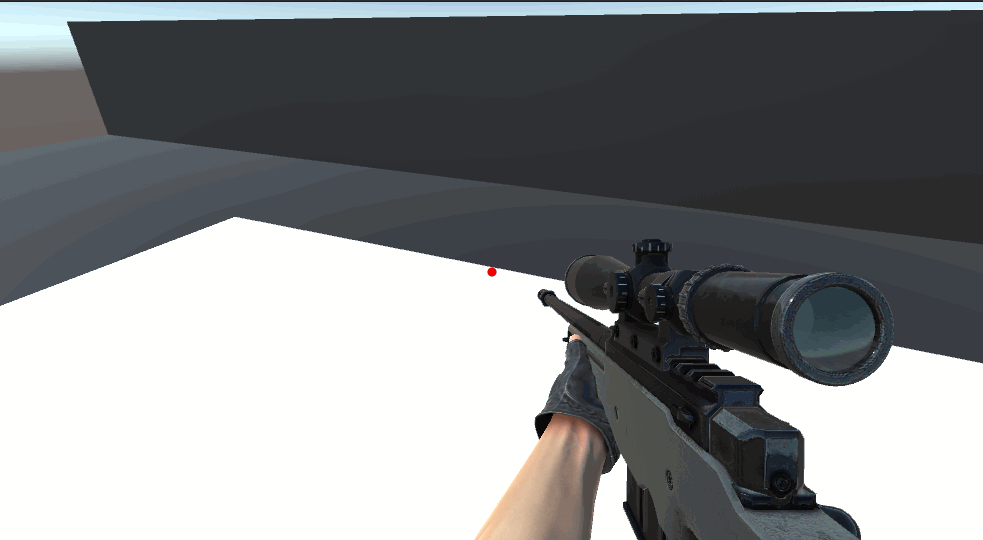
移动
经过上面的分享,我们使用Move实现一下人物的移动
新增MovementScript脚本,挂载在角色身上
public class MovementScript : MonoBehaviour{ [Tooltip(\"角色控制器\")] public CharacterController characterController; private float horizontal; private float vertical; [Header(\"移动\")] [Tooltip(\"角色行走的速度\")] public float walkSpeed = 6f; [Tooltip(\"当前速度\")] private float speed; [Tooltip(\"角色移动的方向\")] private Vector3 moveDirection; void Start() { speed = walkSpeed; } void Update() { horizontal = Input.GetAxis(\"Horizontal\"); vertical = Input.GetAxis(\"Vertical\"); moveDirection = transform.right * horizontal + transform.forward * vertical; // 计算移动方向 //将该向量从局部坐标系转换为世界坐标系,得到最终的移动方向,效果和上面的一样 // moveDirection = transform.TransformDirection(new Vector3(h, 0, v)); moveDirection = moveDirection.normalized; // 归一化移动方向,避免斜向移动速度过快 characterController.Move(moveDirection * Time.deltaTime * speed); }}效果
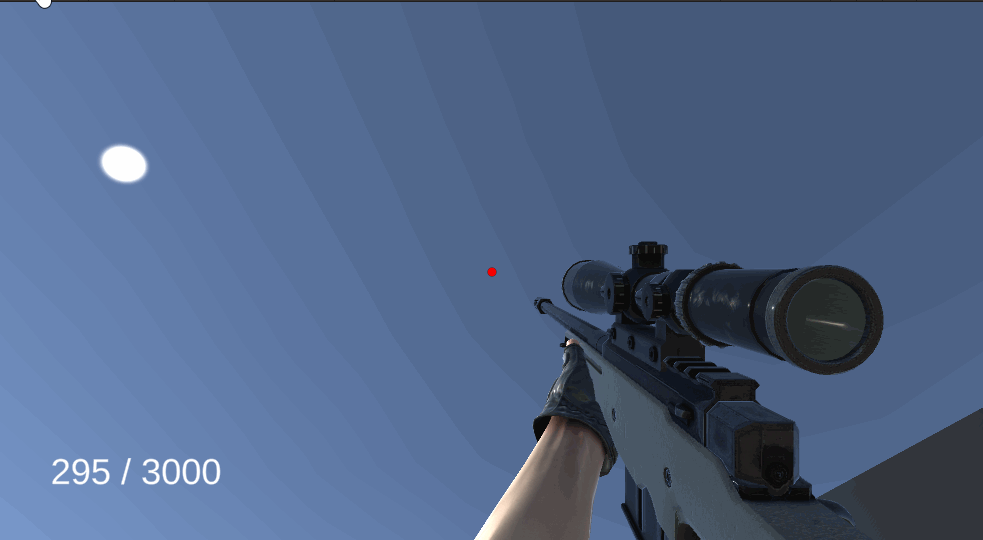
跳跃
方式一
补充:使用 CharaterController.IsGrounded 进行地面检测更为简便。不过这种方法存在一个缺点:在下坡时可能出现检测异常,导致无法跳跃(也可能是我的使用方法不当)。如果这个影响对你来说可以接受,可以考虑采用此方法,毕竟它的实现确实非常简单。
void Update(){ //地面检测 isGround = characterController.isGrounded; SetJump();}//控制跳跃void SetJump(){ bool jump = Input.GetButtonDown(\"Jump\"); if (isGround) { // 在着地时阻止垂直速度无限下降 if (_verticalVelocity < 0.0f) { _verticalVelocity = -2f; } if (jump) { _verticalVelocity = jumpHeight; } } else { //随时间施加重力 _verticalVelocity += Gravity * Time.deltaTime; } characterController.Move(moveDirection * speed * Time.deltaTime + new Vector3(0.0f, _verticalVelocity, 0.0f) * Time.deltaTime);}方式二
地面检测我们就用圆形球体把,因为人物是胶囊体,这种方法最合适
[Header(\"地面检测\")][Tooltip(\"地面检测位置\")] public Transform groundCheck;[Tooltip(\"地面检测半径\")] public float sphereRadius = 0.5f;[Tooltip(\"是否在地面\")] private bool isGround;[Header(\"跳跃\")][Tooltip(\"角色跳跃的高度\")] public float jumpHeight = 1.5f;[Tooltip(\"判断是否在跳跃\")] private bool isJumping;private float _verticalVelocity;void Update(){ //地面检测 isGround = IsGrounded(); SetJump();}//控制跳跃void SetJump(){ bool jump = Input.GetButtonDown(\"Jump\"); if (isGround) { isJumping = false; // 在着地时阻止垂直速度无限下降 if (_verticalVelocity < 0.0f) { _verticalVelocity = -2f; } // 跳跃 if (jump) { // H * -2 * G 的平方根 = 达到期望高度所需的速度 _verticalVelocity = Mathf.Sqrt(jumpHeight * -2f * Gravity); } } else { isJumping = true; } // 随时间施加重力 _verticalVelocity += Gravity * Time.deltaTime;}//是否在地面bool IsGrounded(){ Collider[] colliders = Physics.OverlapSphere(groundCheck.position, sphereRadius); foreach (Collider collider in colliders) { if (collider.gameObject != gameObject && !IsChildOf(collider.transform, transform)) // 忽略角色自身和所有子集碰撞体 { return true; } } return false;}//判断child是否是parent的子集bool IsChildOf(Transform child, Transform parent){ while (child != null) { if (child == parent) { return true; } child = child.parent; } return false;}//在场景视图显示检测,方便调试private void OnDrawGizmos(){ Gizmos.color = Color.red; //地面检测可视化 Gizmos.DrawWireSphere(groundCheck.position, sphereRadius);}配置地面检测点位置
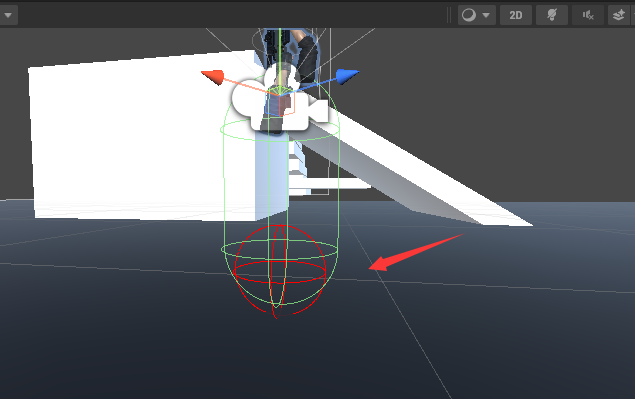
效果
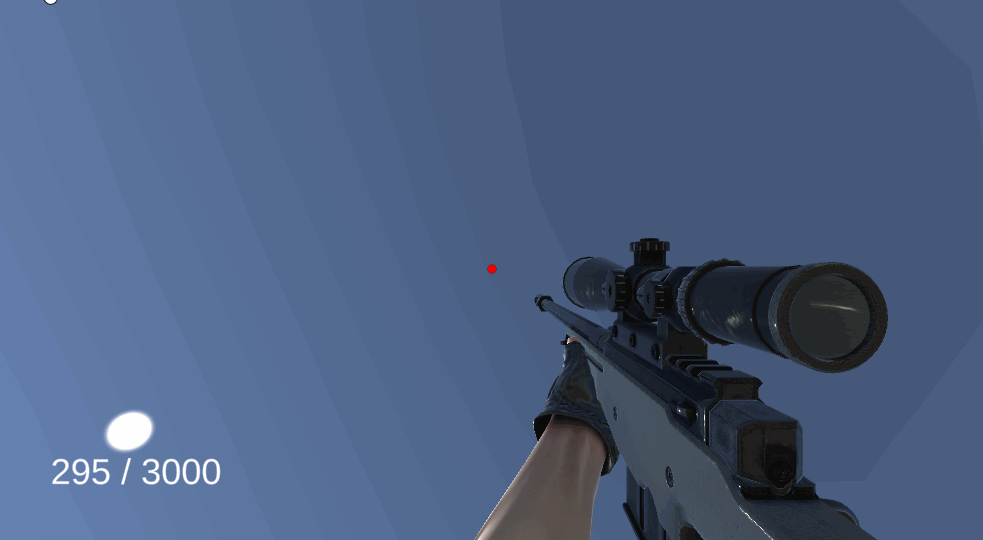
下蹲
下蹲的实现原理是让CharacterController的高度和中心点位置同时减半,同时调整摄像机高度。需要注意的是,当角色头顶有障碍物时,应禁止站立动作以避免穿模问题。为此需要使用盒子碰撞检测来覆盖整个头部区域进行检测。
[Header(\"相机\")][Tooltip(\"摄像机相机\")] public Transform mainCamera;[Tooltip(\"摄像机高度变化的平滑值\")] public float interpolationSpeed = 10f;[Tooltip(\"当前摄像机的位置\")] private Vector3 cameraLocalPosition;[Tooltip(\"当前摄像机的高度\")] private float height;[Header(\"头顶检测\")][Tooltip(\"头顶检测位置\")] public Transform headCheck;[Tooltip(\"盒子半长、半宽、半高\")] public Vector3 halfExtents = new Vector3(0.4f, 0.5f, 0.4f);[Tooltip(\"判断玩家是否可以站立\")] private bool isCanStand;[Header(\"下蹲\")][Tooltip(\"下蹲时候的玩家高度\")] private float crouchHeight;[Tooltip(\"判断玩家是否在下蹲\")] private bool isCrouching;[Tooltip(\"正常站立时玩家高度\")] private float standHeight;void Start(){ standHeight = characterController.height; crouchHeight = standHeight / 2; cameraLocalPosition = mainCamera.localPosition; speed = walkSpeed;}void Update(){ //头顶检测 isCanStand = CanStand(); SetCrouch();} //控制下蹲void SetCrouch(){ if (Input.GetKey(KeyCode.LeftControl)) { Crouch(true); } else { Crouch(false); }}//newCrouching控制下蹲起立public void Crouch(bool newCrouching){ if (!newCrouching && !isCanStand) return; //准备起立时且头顶有东西,不能进行站立 isCrouching = newCrouching; float targetHeight = isCrouching ? crouchHeight : standHeight; characterController.height = targetHeight; //根据下蹲状态设置下蹲时候的高度和站立的高度 characterController.center = new Vector3(0, targetHeight / 2, 0); //将角色控制器的中心位置Y,从头顶往下减少1半的高度 // 设置下蹲站立时候的摄像机高度 float heightTarget = isCrouching ? cameraLocalPosition.y / 2 + characterController.center.y : cameraLocalPosition.y; height = Mathf.Lerp(height, heightTarget, interpolationSpeed * Time.deltaTime);//平滑过渡 mainCamera.localPosition = new Vector3(cameraLocalPosition.x, height, cameraLocalPosition.z);}//是否可以起立,及头顶是否有物品bool CanStand(){ Collider[] colliders = Physics.OverlapBox(headCheck.position, halfExtents); foreach (Collider collider in colliders) { //忽略角色自身和所有子集碰撞体 if (collider.gameObject != gameObject && !IsChildOf(collider.transform, transform)) { return false; } } return true;}//在场景视图显示检测,方便调试private void OnDrawGizmos(){ Gizmos.color = Color.red; //头顶检测可视化 Gizmos.DrawWireCube(headCheck.position, halfExtents * 2f);}配置头顶检测
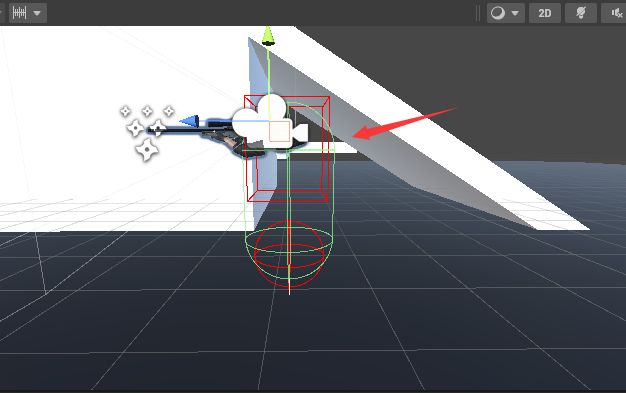
效果
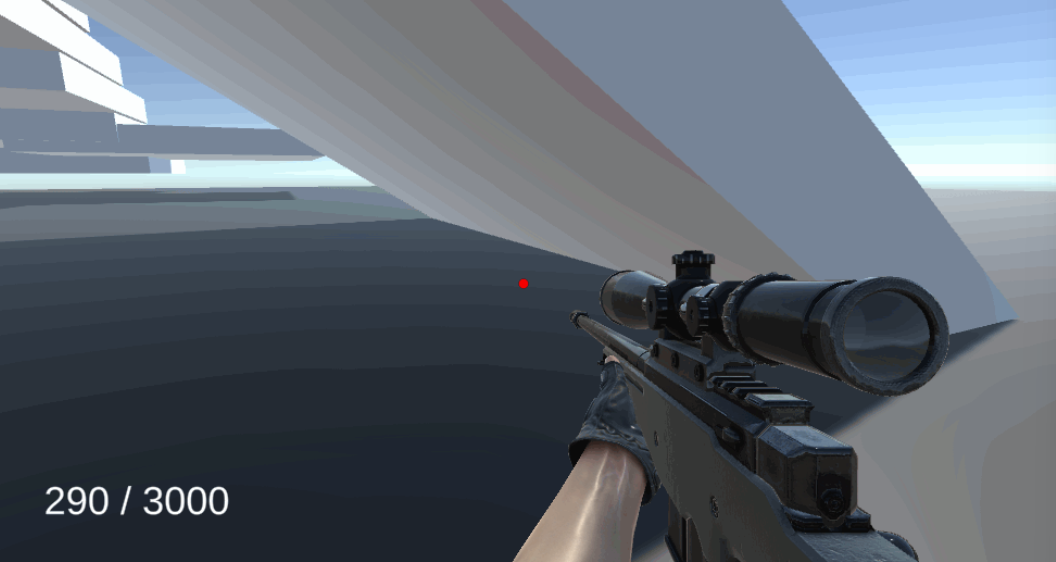
处理下坡抖动问题
在下坡移动时,角色可能会出现抖动现象。虽然抖动本身是正常物理现象,但会影响地面检测的准确性,导致角色下坡时无法正常跳跃,这显然不符合预期。解决方案是:当检测到角色处于斜面时,施加一个向下的压力来增加角色与地面的接触稳定性。具体实现方法是:从角色位置向下发射射线,通过检测射线与地面法线的夹角,若夹角不等于90度即可判定为斜面状态。
[Header(\"斜坡检测\")][Tooltip(\"斜坡射线长度\")] public float slopeForceRayLength = 0.2f;[Tooltip(\"是否在斜坡\")] private bool isSlope;[Header(\"斜坡\")][Tooltip(\"走斜坡时向下施加的力度\")] public float slopeForce = 6.0f;void Update(){ //斜坡检测 isSlope = OnSlope(); SetJump();}//控制跳跃void SetJump(){ //。。。 //为了不影响跳跃,一定要在isJumping = false之前加力 SetSlope(); isJumping = false;} //控制斜坡public void SetSlope(){ //如果处于斜坡 if (isSlope && !isJumping) { //向下增加力 moveDirection.y = characterController.height / 2 * slopeForceRayLength; characterController.Move(Vector3.down * characterController.height / 2 * slopeForce * Time.deltaTime); }}//是否在斜面public bool OnSlope(){ RaycastHit hit; // 向下打出射线(检测是否在斜坡上) if (Physics.Raycast(transform.position + characterController.height / 2 * Vector3.down, Vector3.down, out hit, characterController.height / 2 * slopeForceRayLength)) { // 如果接触到的点的法线,不在(0,1,0)的方向上,那么人物就在斜坡上 if (hit.normal != Vector3.up) return true; } return false;}//在场景视图显示检测,方便调试private void OnDrawGizmos(){ Gizmos.color = Color.red; //斜坡检测可视化 Debug.DrawRay(transform.position + characterController.height / 2 * Vector3.down, Vector3.down * characterController.height / 2 * slopeForceRayLength, Color.blue);}斜坡检测线
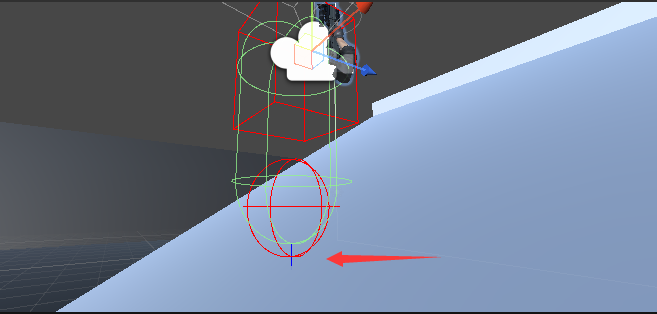
效果
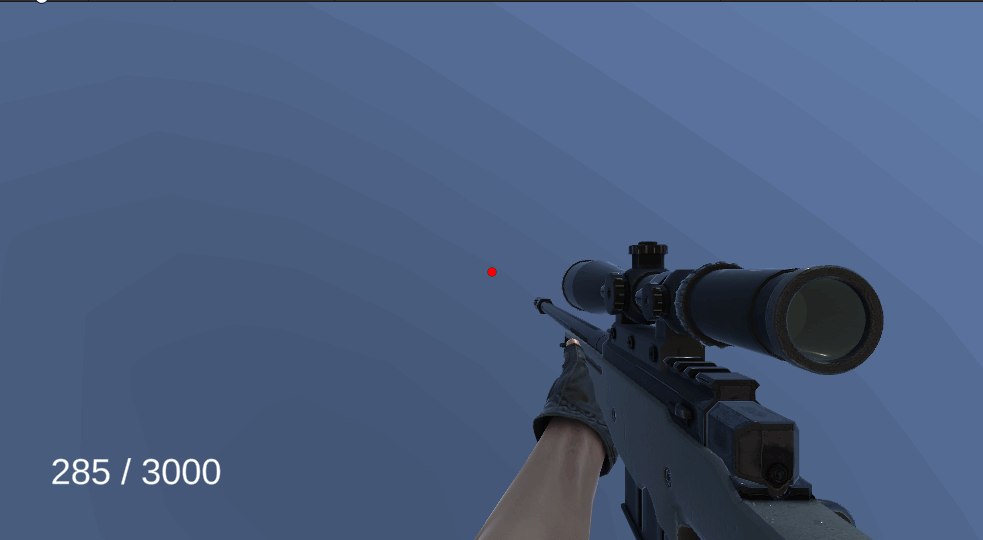
实现奔跑和不同移速控制
[Header(\"移动\")][Tooltip(\"角色行走的速度\")] public float walkSpeed = 6f;[Tooltip(\"角色奔跑的速度\")] public float runSpeed = 9f;[Tooltip(\"角色下蹲的速度\")] public float crouchSpeed = 3f;[Tooltip(\"角色移动的方向\")] private Vector3 moveDirection;[Tooltip(\"当前速度\")] private float speed;[Tooltip(\"是否奔跑\")] private bool isRun; //速度设置void SetSpeed(){ if (isRun) { speed = runSpeed; } else if (isCrouching) { speed = crouchSpeed; } else { speed = walkSpeed; }}//控制奔跑void SetRun(){ if (Input.GetKey(KeyCode.LeftShift) && !isCrouching) { isRun = true; } else { isRun = false; }}效果
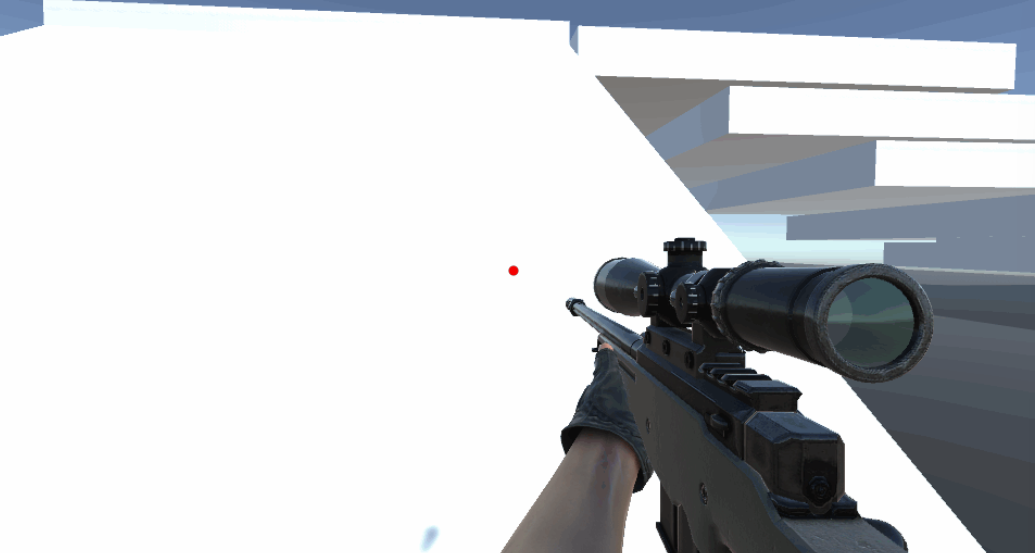
完整代码
注意:代码的参数都是经过我测试过的,复制即可使用,并不推荐大家修改,除非你知道自己在干什么
[RequireComponent(typeof(CharacterController))]public class MovementScript : MonoBehaviour{ [Tooltip(\"角色控制器\")] public CharacterController characterController; [Tooltip(\"重力加速度\")] private float Gravity = 9.8f; private float horizontal; private float vertical; [Header(\"相机\")] [Tooltip(\"摄像机相机\")] public Transform mainCamera; [Tooltip(\"摄像机高度变化的平滑值\")] public float interpolationSpeed = 10f; [Tooltip(\"当前摄像机的位置\")] private Vector3 cameraLocalPosition; [Tooltip(\"当前摄像机的高度\")] private float height; [Header(\"移动\")] [Tooltip(\"角色行走的速度\")] public float walkSpeed = 6f; [Tooltip(\"角色奔跑的速度\")] public float runSpeed = 9f; [Tooltip(\"角色下蹲的速度\")] public float crouchSpeed = 3f; [Tooltip(\"角色移动的方向\")] private Vector3 moveDirection; [Tooltip(\"当前速度\")] private float speed; [Tooltip(\"是否奔跑\")] private bool isRun; [Header(\"地面检测\")] [Tooltip(\"地面检测位置\")] public Transform groundCheck; [Tooltip(\"地面检测半径\")] public float sphereRadius = 0.4f; [Tooltip(\"是否在地面\")] private bool isGround; [Header(\"头顶检测\")] [Tooltip(\"头顶检测位置\")] public Transform headCheck; [Tooltip(\"盒子半长、半宽、半高\")] public Vector3 halfExtents = new Vector3(0.4f, 0.5f, 0.4f); [Tooltip(\"判断玩家是否可以站立\")] private bool isCanStand; [Header(\"斜坡检测\")] [Tooltip(\"斜坡射线长度\")] public float slopeForceRayLength = 0.2f; [Tooltip(\"是否在斜坡\")] private bool isSlope; [Header(\"跳跃\")] [Tooltip(\"角色跳跃的高度\")] public float jumpHeight = 2.5f; [Tooltip(\"判断是否在跳跃\")] private bool isJumping; [Header(\"下蹲\")] [Tooltip(\"下蹲时候的玩家高度\")] private float crouchHeight; [Tooltip(\"判断玩家是否在下蹲\")] private bool isCrouching; [Tooltip(\"正常站立时玩家高度\")] private float standHeight; [Header(\"斜坡\")] [Tooltip(\"走斜坡时施加的力度\")] public float slopeForce = 6.0f; void Start() { standHeight = characterController.height; crouchHeight = standHeight / 2; cameraLocalPosition = mainCamera.localPosition; speed = walkSpeed; } void Update() { horizontal = Input.GetAxis(\"Horizontal\"); vertical = Input.GetAxis(\"Vertical\"); //地面检测 isGround = IsGrounded(); //头顶检测 isCanStand = CanStand(); //斜坡检测 isSlope = OnSlope(); SetSpeed(); SetRun(); SetCrouch(); SetMove(); SetJump(); } //速度设置 void SetSpeed() { if (isRun) { speed = runSpeed; } else if (isCrouching) { speed = crouchSpeed; } else { speed = walkSpeed; } } //控制奔跑 void SetRun() { if (Input.GetKey(KeyCode.LeftShift) && !isCrouching) { isRun = true; } else { isRun = false; } } //控制下蹲 void SetCrouch() { if (Input.GetKey(KeyCode.LeftControl)) { Crouch(true); } else { Crouch(false); } } //控制移动 void SetMove() { if (isGround) { moveDirection = transform.right * horizontal + transform.forward * vertical; // 计算移动方向 //将该向量从局部坐标系转换为世界坐标系,得到最终的移动方向 // moveDirection = transform.TransformDirection(new Vector3(h, 0, v)); moveDirection = moveDirection.normalized; // 归一化移动方向,避免斜向移动速度过快 } } //控制跳跃 void SetJump() { if (Input.GetButtonDown(\"Jump\") && isGround) { isJumping = true; moveDirection.y = jumpHeight; } moveDirection.y -= Gravity * Time.deltaTime; characterController.Move(moveDirection * Time.deltaTime * speed); //为了不影响跳跃,一定要在isJumping = false之前加力 SetSlope(); isJumping = false; } //控制斜坡 public void SetSlope() { //如果处于斜坡 if (isSlope && !isJumping) { //向下增加力 moveDirection.y = characterController.height / 2 * slopeForceRayLength; characterController.Move(Vector3.down * characterController.height / 2 * slopeForce * Time.deltaTime); } } //newCrouching控制下蹲起立 public void Crouch(bool newCrouching) { if (!newCrouching && !isCanStand) return; //准备起立时且头顶有东西,不能进行站立 isCrouching = newCrouching; float targetHeight = isCrouching ? crouchHeight : standHeight; float heightChange = targetHeight - characterController.height; //计算高度变化 characterController.height = targetHeight; //根据下蹲状态设置下蹲时候的高度和站立的高度 characterController.center += new Vector3(0, heightChange / 2, 0); //根据高度变化调整中心位置 // 设置下蹲站立时候的摄像机高度 float heightTarget = isCrouching ? cameraLocalPosition.y / 2 + characterController.center.y : cameraLocalPosition.y; height = Mathf.Lerp(height, heightTarget, interpolationSpeed * Time.deltaTime); mainCamera.localPosition = new Vector3(cameraLocalPosition.x, height, cameraLocalPosition.z); } //是否可以起立,及头顶是否有物品 bool CanStand() { Collider[] colliders = Physics.OverlapBox(headCheck.position, halfExtents); foreach (Collider collider in colliders) { //忽略角色自身和所有子集碰撞体 if (collider.gameObject != gameObject && !IsChildOf(collider.transform, transform)) { return false; } } return true; } //是否在地面 bool IsGrounded() { Collider[] colliders = Physics.OverlapSphere(groundCheck.position, sphereRadius); foreach (Collider collider in colliders) { if (collider.gameObject != gameObject && !IsChildOf(collider.transform, transform)) // 忽略角色自身和所有子集碰撞体 { return true; } } return false; } //是否在斜面 public bool OnSlope() { RaycastHit hit; // 向下打出射线(检测是否在斜坡上) if (Physics.Raycast(transform.position + characterController.height / 2 * Vector3.down, Vector3.down, out hit, characterController.height / 2 * slopeForceRayLength)) { // 如果接触到的点的法线,不在(0,1,0)的方向上,那么人物就在斜坡上 if (hit.normal != Vector3.up) return true; } return false; } //判断child是否是parent的子集 bool IsChildOf(Transform child, Transform parent) { while (child != null) { if (child == parent) { return true; } child = child.parent; } return false; } //在场景视图显示检测,方便调试 private void OnDrawGizmos() { Gizmos.color = Color.red; //头顶检测可视化 Gizmos.DrawWireCube(headCheck.position, halfExtents * 2f); //地面检测可视化 Gizmos.DrawWireSphere(groundCheck.position, sphereRadius); //斜坡检测可视化 Debug.DrawRay(transform.position + characterController.height / 2 * Vector3.down, Vector3.down * characterController.height / 2 * slopeForceRayLength, Color.blue); }}补充,简单版本
using UnityEngine;[RequireComponent(typeof(CharacterController))]public class MovementScript : MonoBehaviour{ [Tooltip(\"角色控制器\")] public CharacterController characterController; [Tooltip(\"重力加速度\")] private float Gravity = -19.8f; private float horizontal; private float vertical; [Header(\"相机\")] [Tooltip(\"摄像机相机\")] public Transform mainCamera; [Tooltip(\"摄像机高度变化的平滑值\")] public float interpolationSpeed = 10f; [Tooltip(\"当前摄像机的位置\")] private Vector3 cameraLocalPosition; [Tooltip(\"当前摄像机的高度\")] private float height; [Header(\"移动\")] [Tooltip(\"角色行走的速度\")] public float walkSpeed = 6f; [Tooltip(\"角色奔跑的速度\")] public float runSpeed = 9f; [Tooltip(\"角色下蹲的速度\")] public float crouchSpeed = 3f; [Tooltip(\"角色移动的方向\")] private Vector3 moveDirection; [Tooltip(\"当前速度\")] private float speed; [Tooltip(\"是否奔跑\")] private bool isRun; [Header(\"地面检测\")] [Tooltip(\"是否在地面\")] private bool isGround; [Header(\"头顶检测\")] [Tooltip(\"头顶检测位置\")] public Transform headCheck; [Tooltip(\"盒子半长、半宽、半高\")] public Vector3 halfExtents = new Vector3(0.4f, 0.5f, 0.4f); [Tooltip(\"判断玩家是否可以站立\")] private bool isCanStand; [Header(\"跳跃\")] [Tooltip(\"角色跳跃的高度\")] public float jumpHeight = 2.5f; private float _verticalVelocity; [Header(\"下蹲\")] [Tooltip(\"下蹲时候的玩家高度\")] private float crouchHeight; [Tooltip(\"判断玩家是否在下蹲\")] private bool isCrouching; [Tooltip(\"正常站立时玩家高度\")] private float standHeight; void Start() { standHeight = characterController.height; crouchHeight = standHeight / 2; cameraLocalPosition = mainCamera.localPosition; speed = walkSpeed; } void Update() { horizontal = Input.GetAxis(\"Horizontal\"); vertical = Input.GetAxis(\"Vertical\"); //地面检测 isGround = characterController.isGrounded; //头顶检测 isCanStand = CanStand(); SetSpeed(); SetRun(); SetCrouch(); SetMove(); SetJump(); } //速度设置 void SetSpeed() { if (isRun) { speed = runSpeed; } else if (isCrouching) { speed = crouchSpeed; } else { speed = walkSpeed; } } //控制奔跑 void SetRun() { if (Input.GetKey(KeyCode.LeftShift) && !isCrouching) { isRun = true; } else { isRun = false; } } //控制下蹲 void SetCrouch() { if (Input.GetKey(KeyCode.LeftControl)) { Crouch(true); } else { Crouch(false); } } //控制移动 void SetMove() { moveDirection = transform.right * horizontal + transform.forward * vertical; // 计算移动方向 //将该向量从局部坐标系转换为世界坐标系,得到最终的移动方向 // moveDirection = transform.TransformDirection(new Vector3(h, 0, v)); moveDirection = moveDirection.normalized; // 归一化移动方向,避免斜向移动速度过快 } //控制跳跃 void SetJump() { bool jump = Input.GetButtonDown(\"Jump\"); if (isGround) { // 在着地时阻止垂直速度无限下降 if (_verticalVelocity < 0.0f) { _verticalVelocity = -2f; } if (jump) { _verticalVelocity = jumpHeight; } } else { //随时间施加重力 _verticalVelocity += Gravity * Time.deltaTime; } characterController.Move(moveDirection * speed * Time.deltaTime + new Vector3(0.0f, _verticalVelocity, 0.0f) * Time.deltaTime); } //newCrouching控制下蹲起立 public void Crouch(bool newCrouching) { if (!newCrouching && !isCanStand) return; //准备起立时且头顶有东西,不能进行站立 isCrouching = newCrouching; float targetHeight = isCrouching ? crouchHeight : standHeight; float heightChange = targetHeight - characterController.height; //计算高度变化 characterController.height = targetHeight; //根据下蹲状态设置下蹲时候的高度和站立的高度 characterController.center += new Vector3(0, heightChange / 2, 0); //根据高度变化调整中心位置 // 设置下蹲站立时候的摄像机高度 float heightTarget = isCrouching ? cameraLocalPosition.y / 2 + characterController.center.y : cameraLocalPosition.y; height = Mathf.Lerp(height, heightTarget, interpolationSpeed * Time.deltaTime); mainCamera.localPosition = new Vector3(cameraLocalPosition.x, height, cameraLocalPosition.z); } //是否可以起立,及头顶是否有物品 bool CanStand() { Collider[] colliders = Physics.OverlapBox(headCheck.position, halfExtents); foreach (Collider collider in colliders) { //忽略角色自身和所有子集碰撞体 if (collider.gameObject != gameObject && !IsChildOf(collider.transform, transform)) { return false; } } return true; } //判断child是否是parent的子集 bool IsChildOf(Transform child, Transform parent) { while (child != null) { if (child == parent) { return true; } child = child.parent; } return false; } //在场景视图显示检测,方便调试 private void OnDrawGizmos() { Gizmos.color = Color.red; //头顶检测可视化 Gizmos.DrawWireCube(headCheck.position, halfExtents * 2f); }}实现物理碰撞效果(2025/08/06补充)
这段代码的作用是在角色控制器与其他碰撞体发生碰撞时,给碰撞体施加一个基于角色控制器速度的冲量,以模拟碰撞的物理效果。
private CollisionFlags m_CollisionFlags; // 碰撞标记m_CollisionFlags = characterController.Move(...); // 移动角色控制器 private void OnControllerColliderHit(ControllerColliderHit hit){ Debug.Log(\"与其他碰撞体发生碰撞\"); //获取碰撞体上的 Rigidbody 组件。 Rigidbody body = hit.collider.attachedRigidbody; //CollisionFlags.Below 表示角色控制器与碰撞体之间是底部接触 if (m_CollisionFlags == CollisionFlags.Below) { return; } //然后,再次检查获取到的 Rigidbody 是否为空或者是否为静态物体(isKinematic),如果是,则同样不进行任何处理,直接返回。 if (body == null || body.isKinematic) { return; } body.AddForceAtPosition(characterController.velocity * 0.1f, hit.point, ForceMode.Impulse); // 在碰撞点施加冲量}

